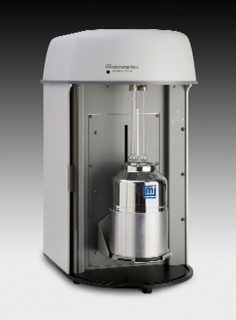Micromeritics’ TriStar II Plus is a fully automated, three-port surface area and porosity analyzer intended for laboratories that require the combination of expanded throughput and the highest quality data.
Suited for use in both quality control and research environments, the TriStar II Plus can collect up to 1000 data points. Fine details of the isotherm can be observed and recorded providing high resolution and revealing pore structure details. The three analysis ports operate simultaneously and independently of one another.
 Micromeritics’ TriStar® II Plus Surface Area and Porosity System
Micromeritics’ TriStar® II Plus Surface Area and Porosity System
The TriStar II Plus contains all the capabilities of the popular TriStar II with additional hardware and software features. An improved dewar design provides more than 40 hours of continuous temperature control. A unique stainless-steel manifold is corrosive-resistant and designed for highly accurate gas management. A dedicated saturation pressure (P0) port is standard, allowing the measurement of saturation pressure on a continuous basis. The instrument also features a krypton option, allowing precise measurements in the very low surface area range.
The TriStar II Plus includes enhanced software capabilities, data reduction features, and instrument monitoring. An innovative dashboard monitors and provides convenient access to real-time instrument performance indicators and maintenance scheduling information. Intuitive MicroActive™ software gives the user the ability to interactively evaluate isotherm data and reduce the time required to obtain surface area and porosity results. Interaction with adsorption data is direct. By simply moving the calculation bars, the user is immediately updated with new textural properties. User-selectable data ranges through the graphic interface allow direct modeling for BET, t-Plot, Langmuir, DFT interpretation, and much more.
Included is the improved ability to overlay files (up to 25) including mercury intrusion data with file add and subtract feature. A Report Options editor allows the user to define up to five reports with on-screen previews. Powerful Python scripting language allows users to develop extensions to the standard report library available within the TriStar II Plus software application. The instrument also includes the Dual DFT NLDFT model that allows the user to combine the information gathered from nitrogen and carbon dioxide isotherms to deliver a full pore size distribution on materials (such as carbon slit pores) where very small micropores are present.